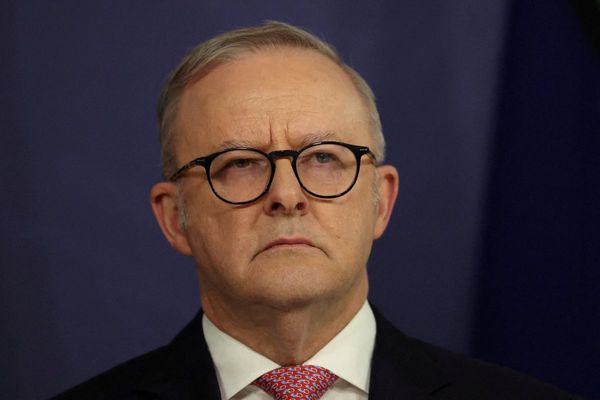
A venture capital firm, if you think about it, is an extremely weird acquisition target.
VC firms have malleable time horizons that are long (and getting longer), and fundamentally are devoted to high-risk investing that’s reasonably likely to fail. To boot, VC firms getting acquired is an exceptionally rare occurrence—examples exist, but they’re all scattered and odd, like Meta’s half-acquisition of AI two-man-show NFDG this year, or StepStone Group’s 2021 acquisition of Greenspring Associates. There are probably more visible comets in any five-year period than notable acquisitions of VC firms.
So, when Goldman Sachs announced plans on Monday to acquire Industry Ventures, eyebrows shot up. The deal, for a venture firm with about $7 billion in assets under management, is substantial—$665 million in cash and equity, tacking on an additional performance-based $300 million through 2030.
“This acquisition is the first of its kind and signals the increasing importance of VC in propelling the growth of Wall Street banks,” said Emily Zheng, PitchBook senior VC analyst. “Acquisitions of this scale are difficult to replicate given Goldman and Industry’s prominence, though we will likely see heightened investment in alternative strategies across banks after this news.”
So, does this mean Goldman’s now going to be competing with the Sand Hill Road set, elbowing into more hot funding rounds? Is this the next logical step after the arrival (and subsequent retreat) of hedge funds into the VC game a few years ago?
While Industry Ventures was an active startup investor, it was primarily known as a pioneer in the secondaries market. So, off the bat: the Goldman-Industry Ventures deal isn’t just about venture—it’s very specifically about secondaries. As Mercedes Bent, Lightspeed venture partner, points out: Industry is “one of the most established players in VC secondaries and hybrid funds, so this gives Goldman a high-quality on-ramp into private markets—both a liquidity solution and early visibility into venture deal flow.”
Marc Nachmann, Goldman’s global head of asset and wealth management, told Fortune that the firm sees secondaries as a “secular growth opportunity” and that the Industry Ventures deal is reflective of the banking giant’s “belief in rounding out our platform.”
“Right now, secondaries are less than 1% of primary,” Nachmann said. “However much you think alts will grow, secondaries will grow even faster… And people are going to want to manage their portfolio actively.”
Secondaries have soared as companies have stayed private longer, going from a once-maligned tool to, increasingly, the lifeblood of the private markets. Some numbers suggest that, by the end of 2025, secondary trading volume could cross $200 billion, shattering last year’s record $162 billion.
“This deal really shows just how far the VC secondaries market has come in recent years—emerging as a critical component of venture portfolio management for firms of all types and sizes,” said Zach Aarons, MetaProp cofounder and general partner, via email. “Goldman appears to be buying the entire firm—the team, infrastructure, and operational capabilities to run this type of book into the future.”
Goldman’s Nachmann confirmed to Fortune that Industry’s entire team will be joining up.
Acquisitions of VC firms will likely continue to be fairly anomalous, but we may see more of them. This deal shows, Costanoa managing partner Greg Sands says, “how attractive venture remains, even amid market uncertainty.” And there is uncertainty: The landscape is in regulatory flux from D.C. (consider the recent executive order linking private markets more closely to 401k plans) and via Silicon Valley and Wall Street.
“Acquisitions like this remain relatively rare, but they reflect how institutional investors are moving deeper into private markets, even as the venture landscape grows more bifurcated in terms of performance and strategy,” said Antonio Rodriguez, Matrix managing partner via email. “What remains to be seen is whether this kind of diversification ultimately strengthens the broader venture ecosystem, or whether maintaining a sharp, focused strategy will deliver better returns over time.”
For all that private market rules are shifting, the Goldman-Industry deal exists at the intersection of relentless, long-running trends—companies staying private longer and financial firms reaching further into private company dynamics. There’s also the slow but undeniable blurring of what it means to be a private company versus a public company, and the sense that private market opportunities have never been bigger.
“In talking with public market investors, they are very aware of the fact that the number of publicly-traded companies in the U.S. has actually dropped fairly significantly over the last few decades (it has roughly halved in the last two decades),” said Don Butler, Thomvest Ventures managing director, via email. “So, the real game to be played feels increasingly like it is in the private markets.”
See you tomorrow,
Allie Garfinkle
X: @agarfinks
Email: alexandra.garfinkle@fortune.com
Submit a deal for the Term Sheet newsletter here.
Joey Abrams curated the deals section of today’s newsletter. Subscribe here.







